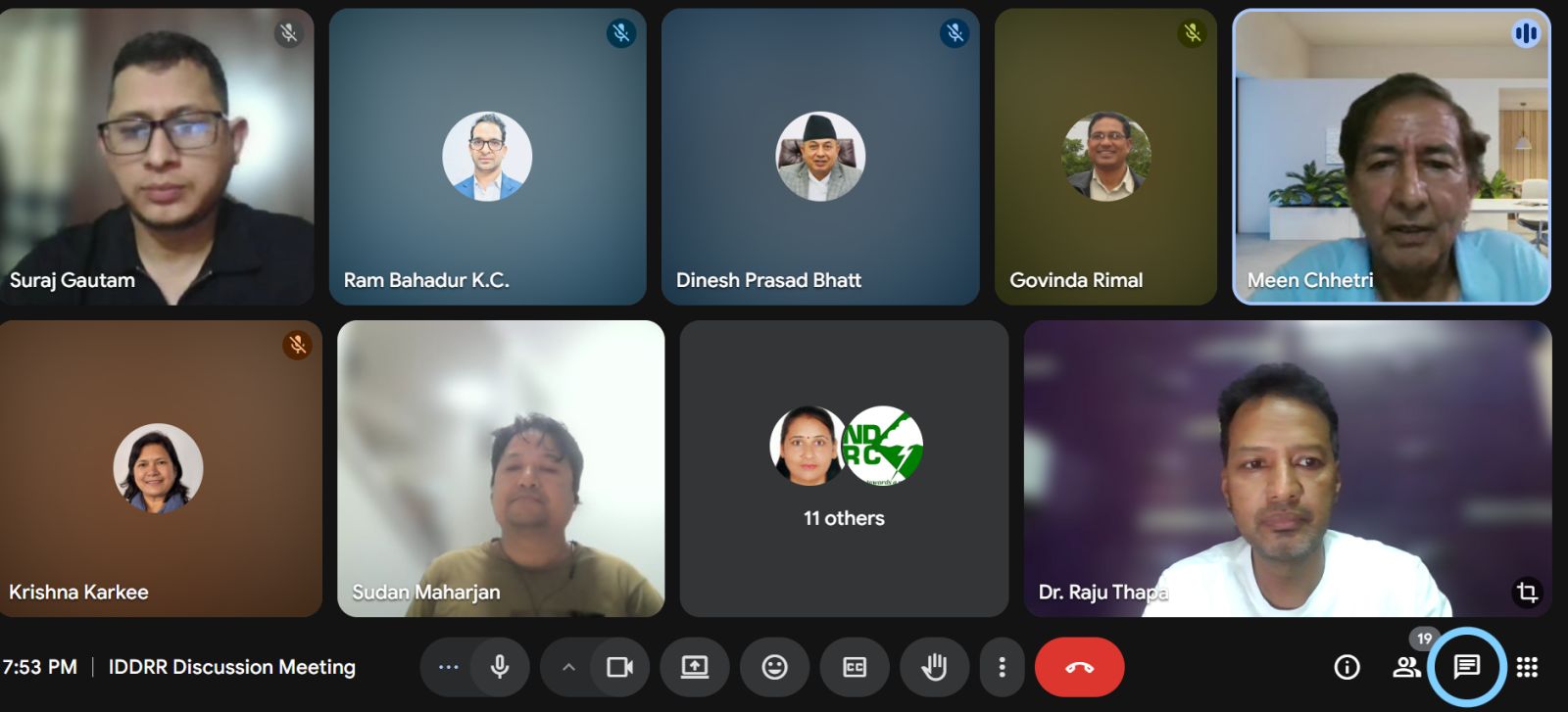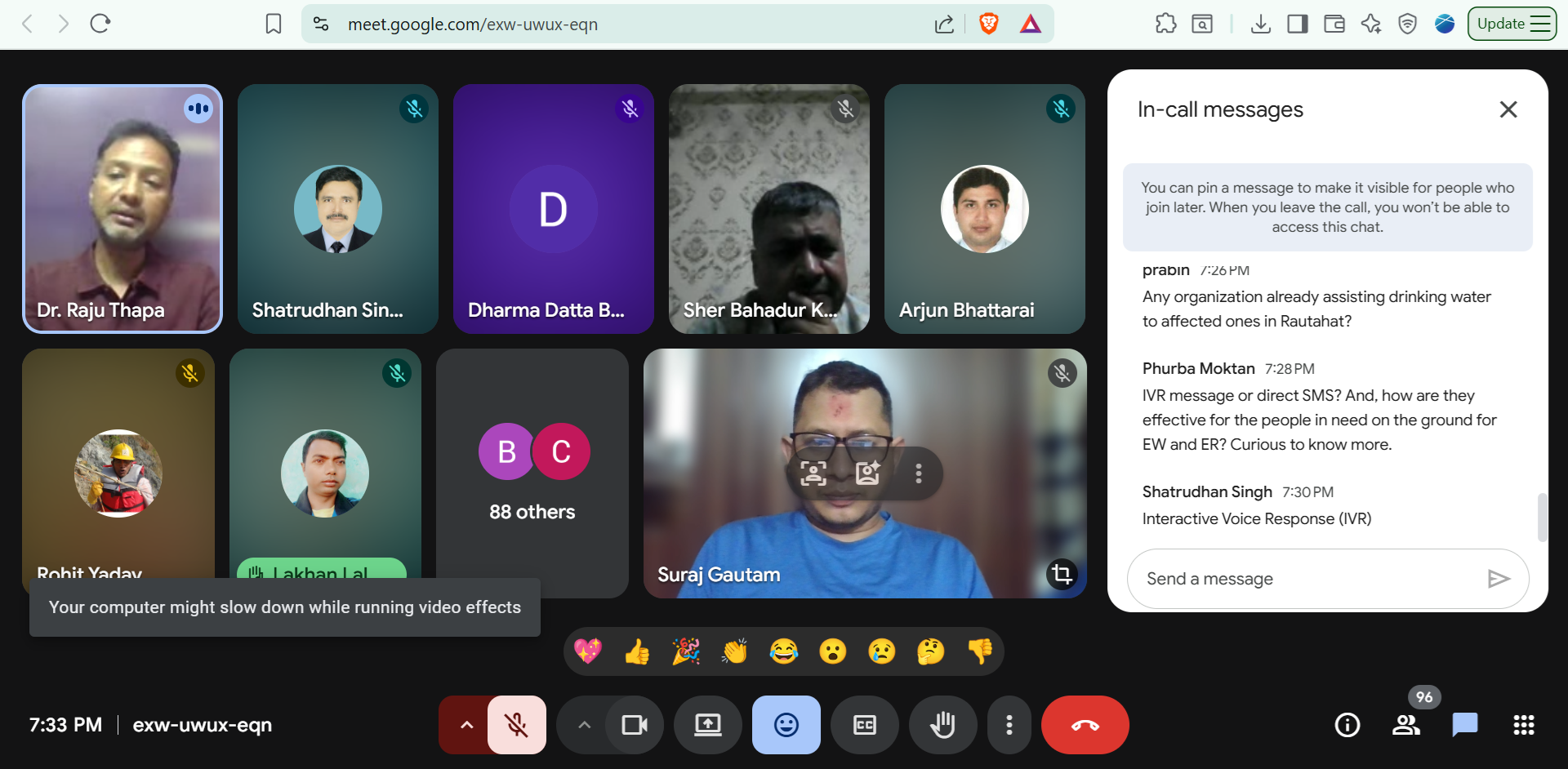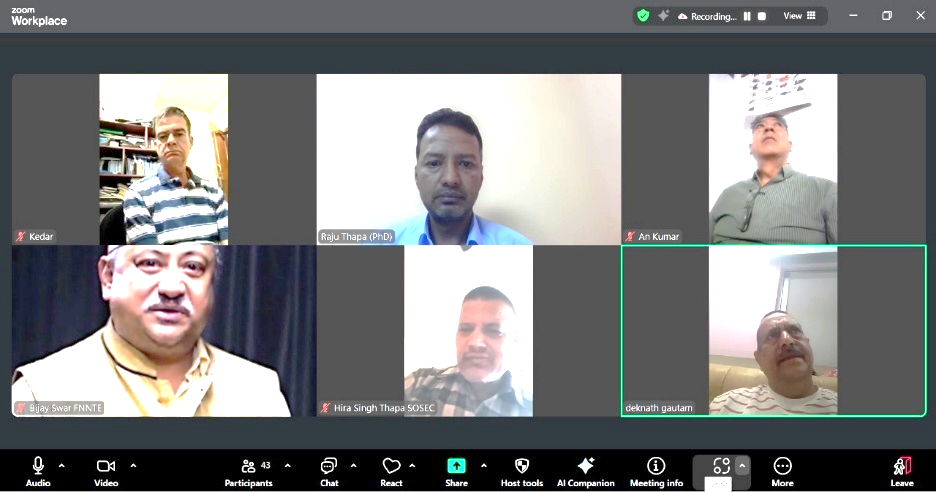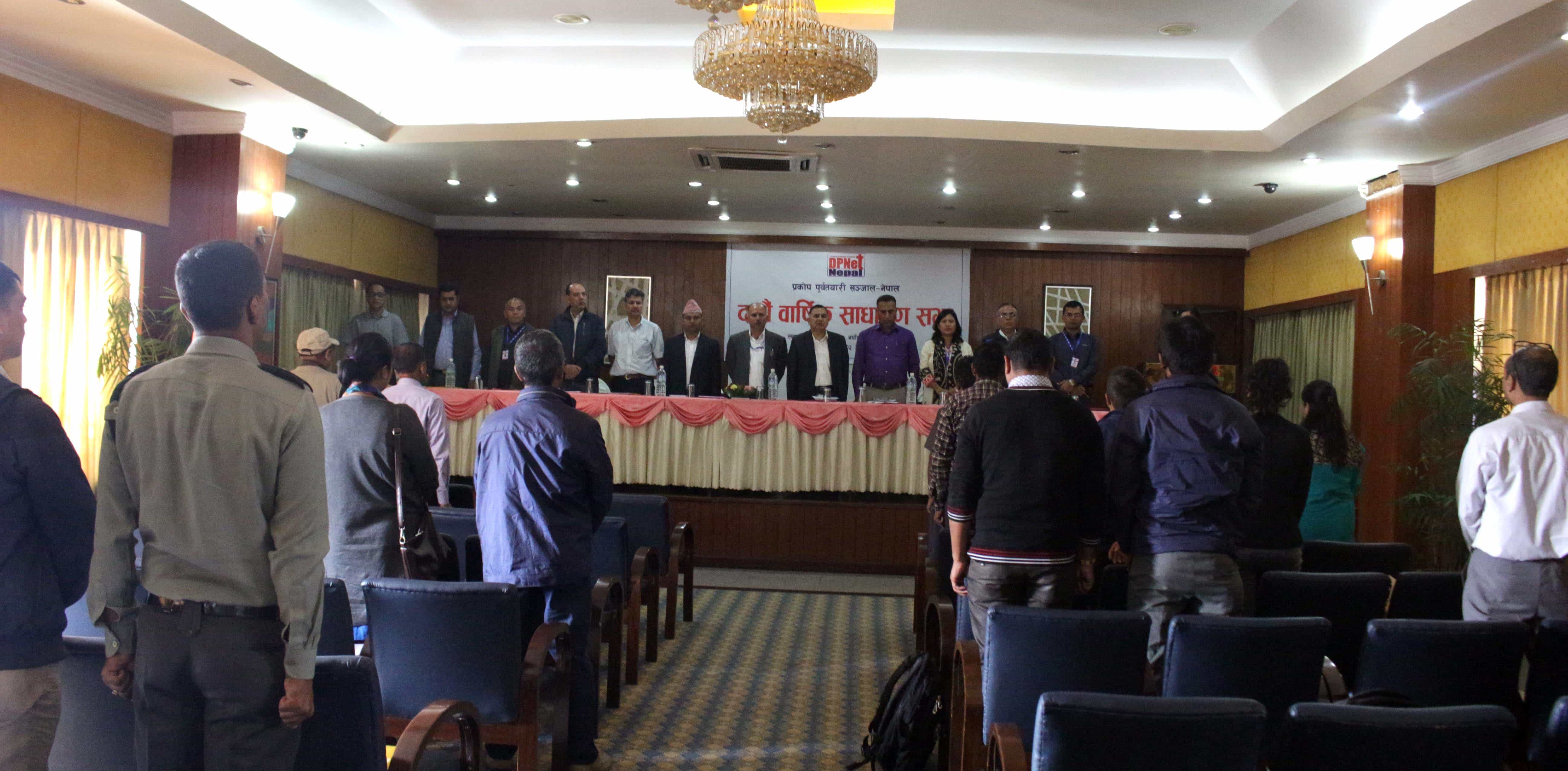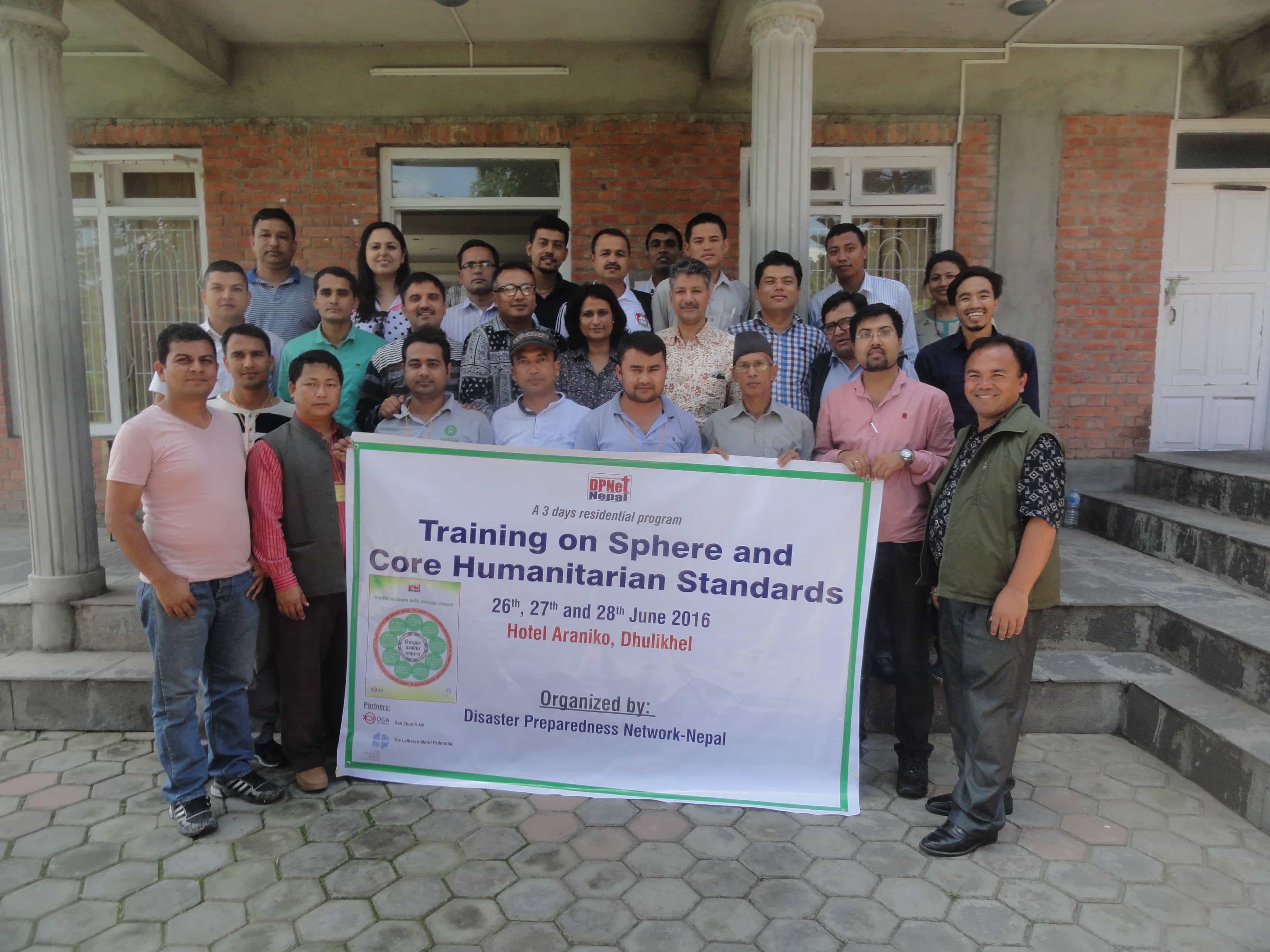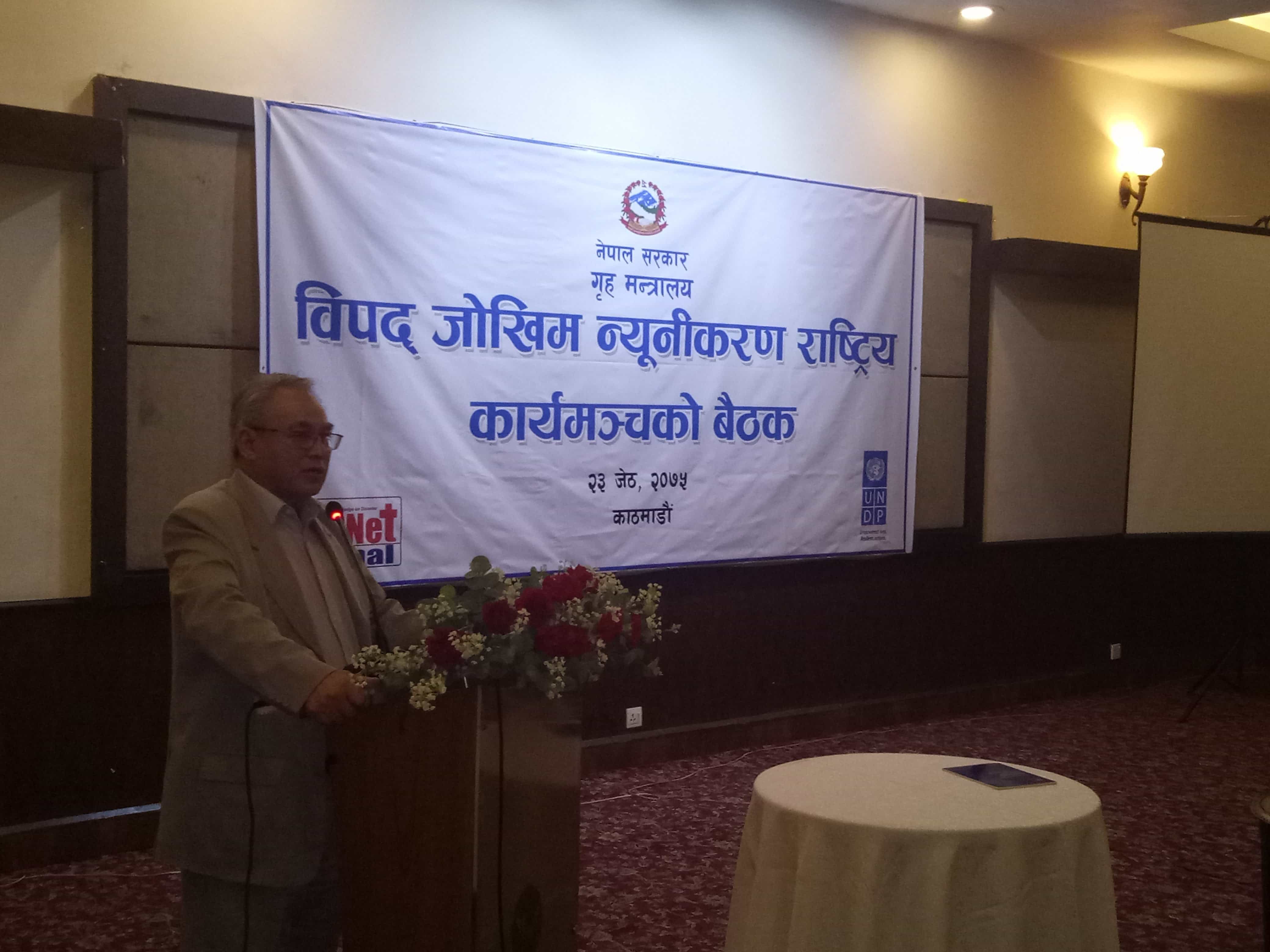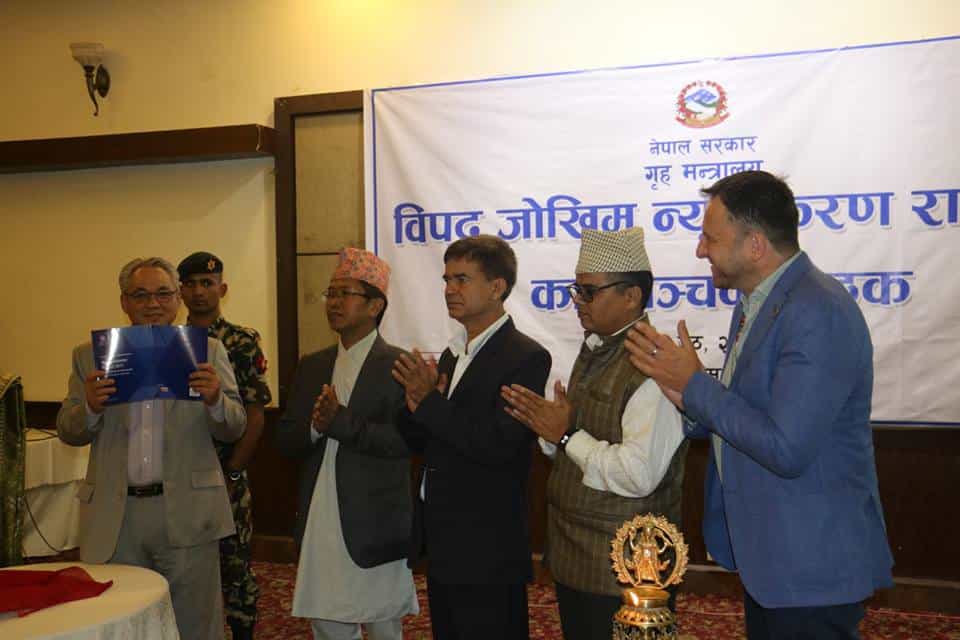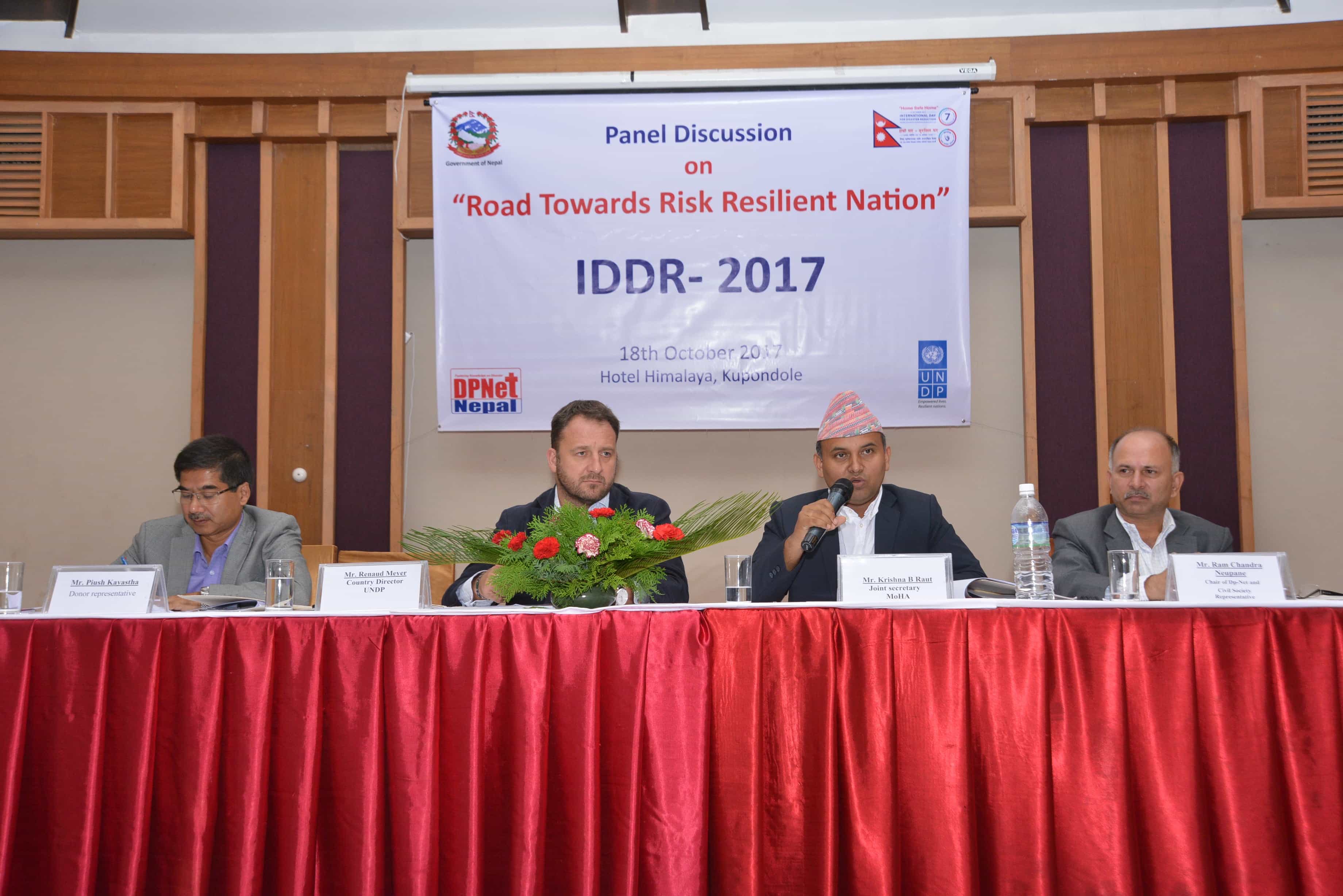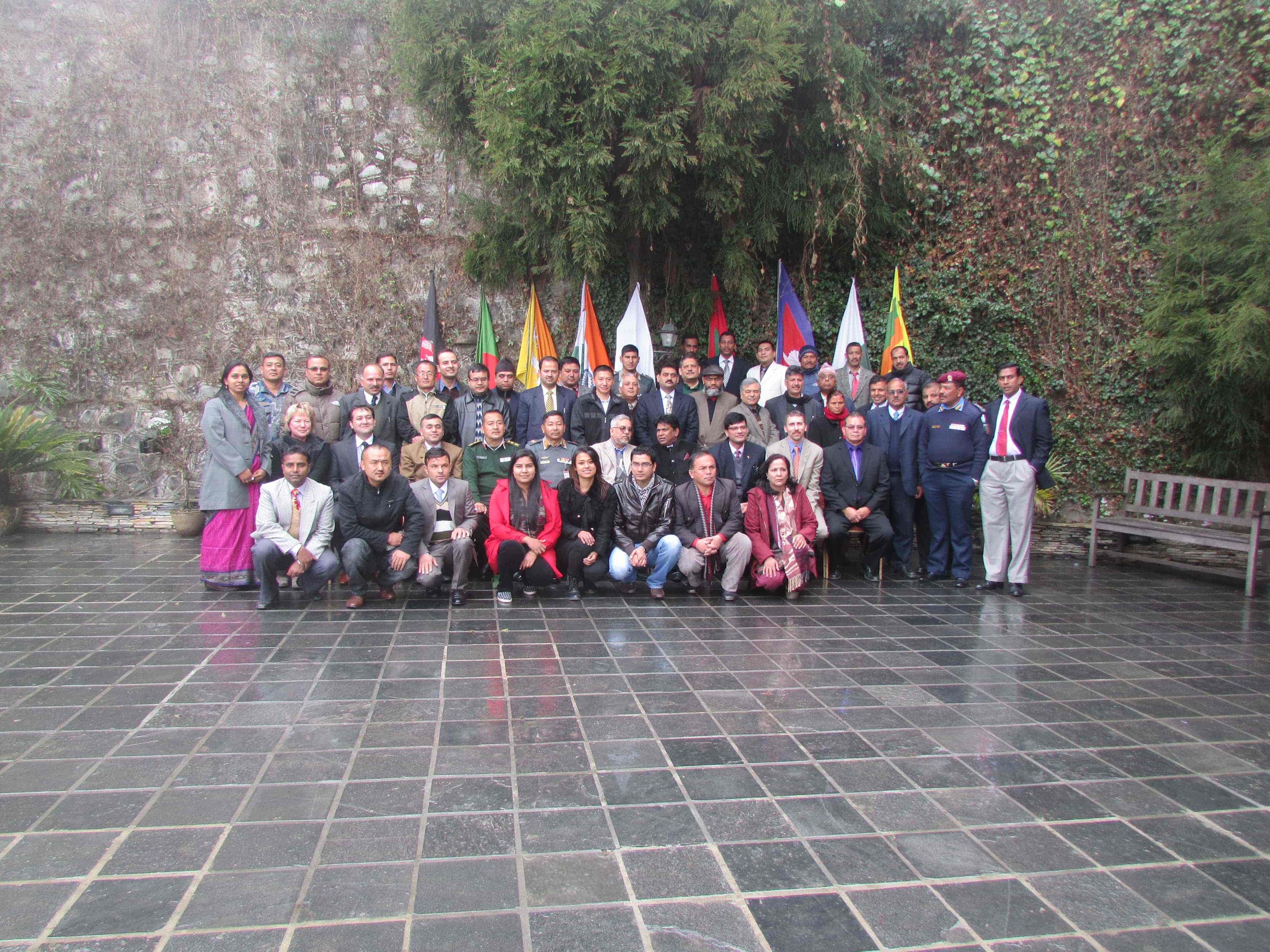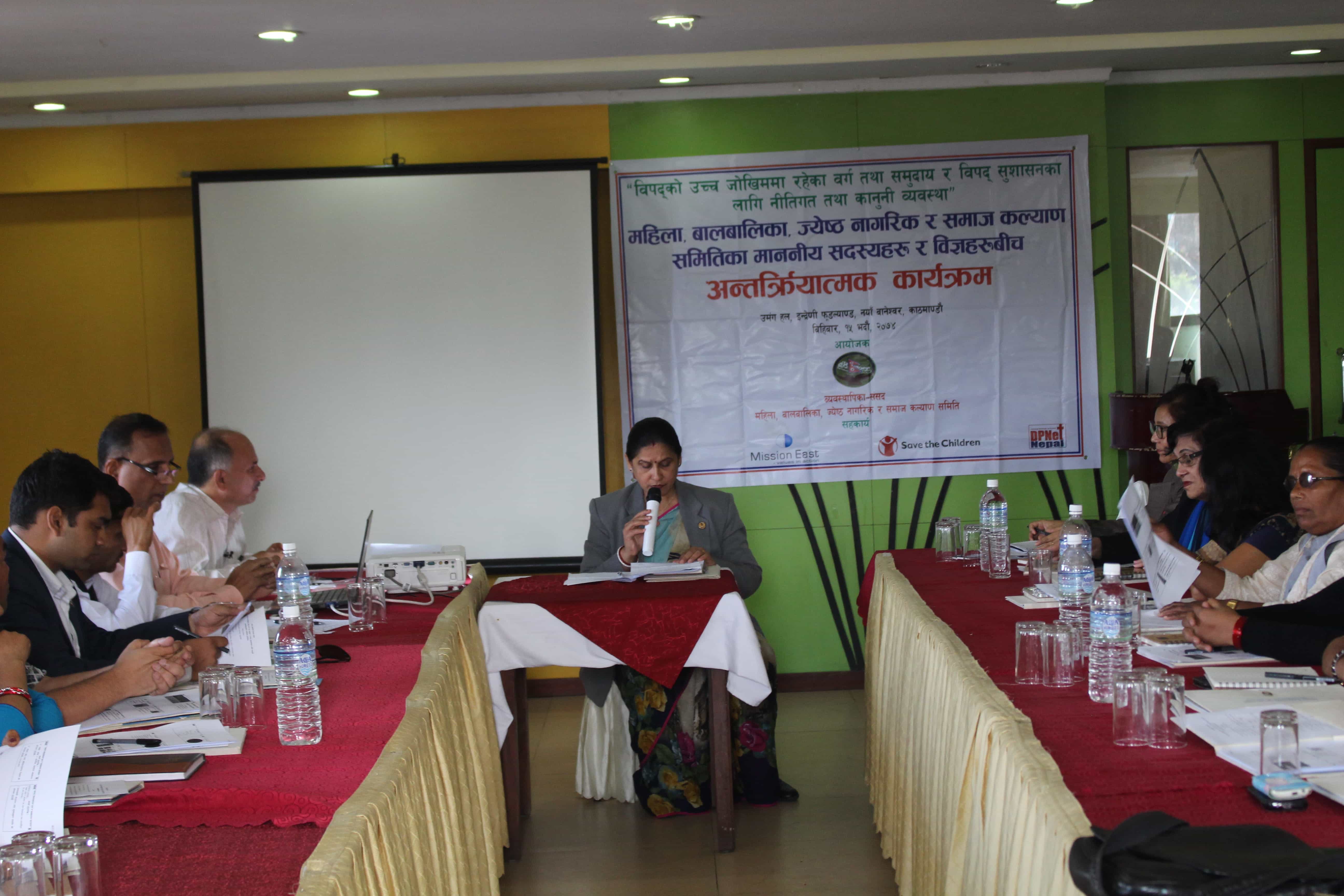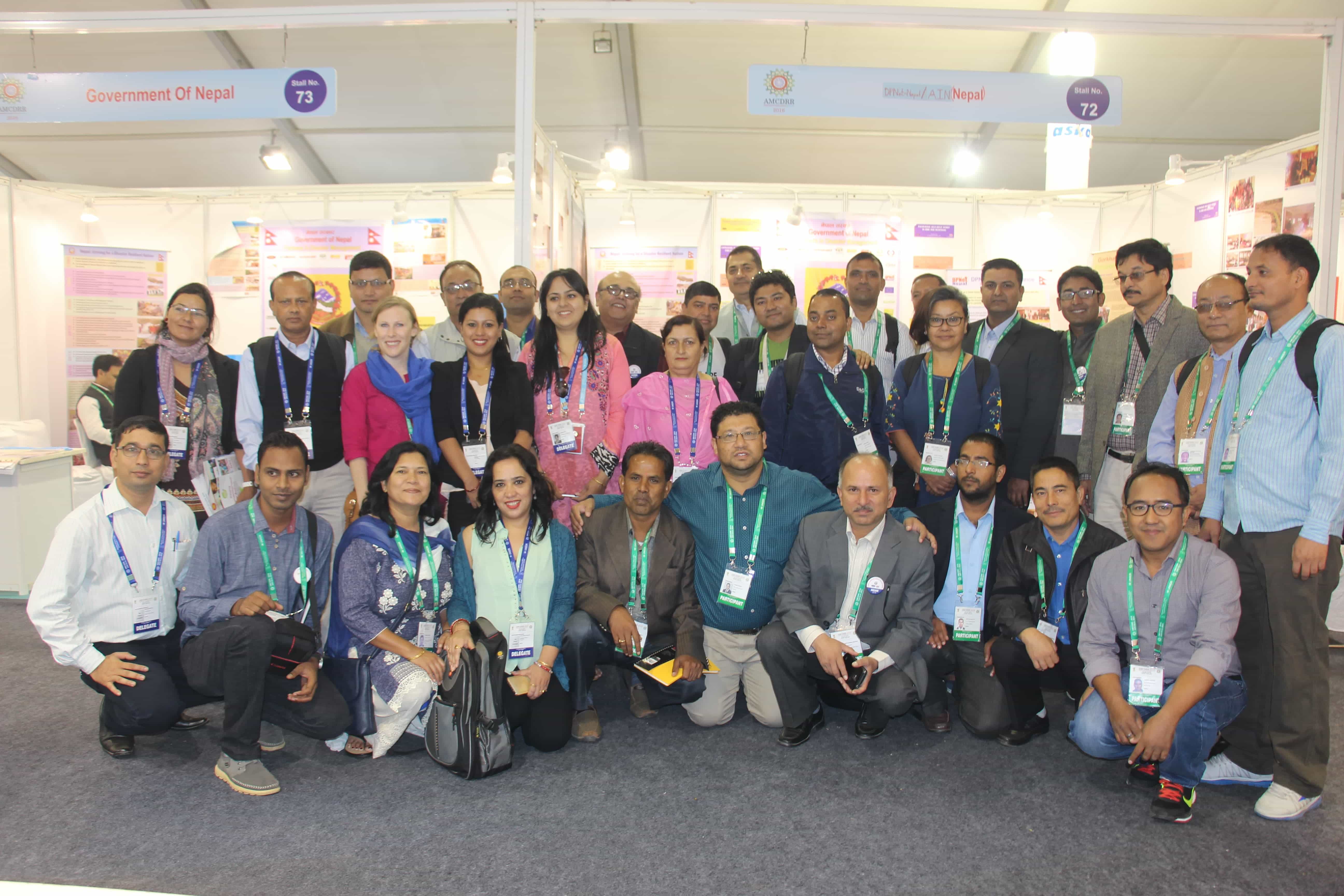Seminar on Implementation Challenges to Disaster Risk Reduction and Management Policies and way forward
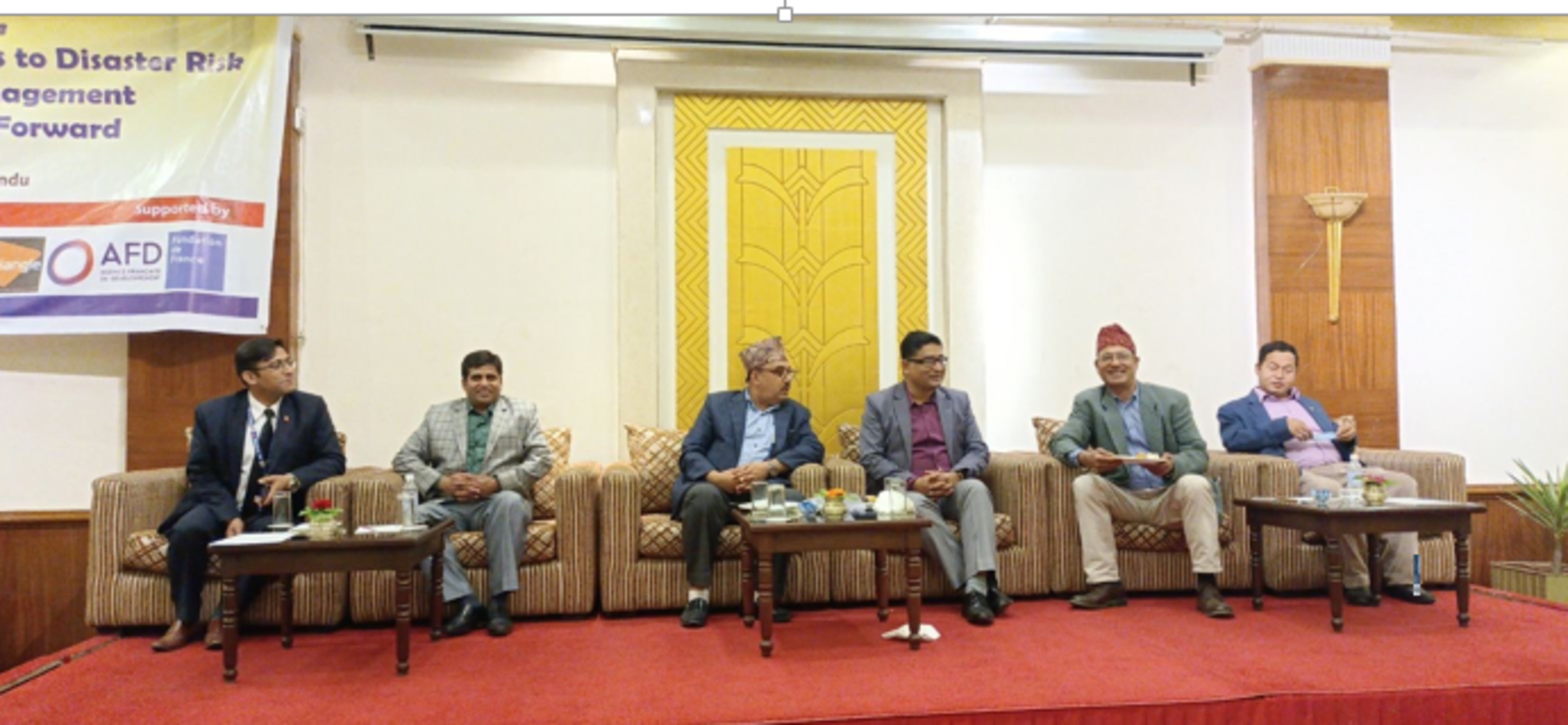
The Seminar on “Implementation Challenges to Disaster Risk Reduction and Management Policies and way forward” was organized by Association for Rural Social Welfare (ARSOW), DiMaNN, DPNet Nepal and NGO Federation on 9th Nov, 2021 on The Everest Hotel, Banesowr. The program was organized under the chairmanship of Mr. Jit Ram Lama, President of NGO federation of Nepal. The Chief Guest of the program was Mr. Anil Pokharel, Executive Chief of NDRRMA. The Special guest of the program was Mr. Eric Marin. The guests were from Ministries, SWC, CSOs and networks. Mr. Saugat Thapa, Program Coordinator of DiMaNN facilitated the program.
Mr. Surya Bahadur Thapa, Chairperson of DPNet welcomed everyone present at the seminar. He shared the objective of the program and highlighted the status of policies, acts and strategies for disaster in Nepal. He reminded the struggle of stakeholders on formation of DRR&M act and policies. He further added that DRR&M is included in the constitution of Nepal. Disaster occurs frequently and there are lots of disaster events causing loss of economy, loss of lives, loss of agricultural products and land and many more. These should be addressed by authority and mainstream disaster with development. He also highlighted the slogan of IDDRR-2021 – “Only together can we make true progress towards a safer and more resilient planet”.
Mr. Eric Marin shared about the TGH mission, work carried till on different sectors including disaster risk reduction and management. He further shared about the National and International approaches carried out in Asia, Africa and Europe by TGH. He further shared about a comprehensive and sustainable solution for Disaster risk reduction and management. Construction of irrigation dams, proper road construction are very useful approaches to reduce disaster. Income generating approaches such as organic farming helps in socio economic recovery. He then congratulated the stakeholders presented on the behalf of TGH. More than 80 participants joined the program.
Major Highlights
· Dr. Dijan Bhattrai, Under Secretary of NDRRMA presented on “Various programs and other measures taken by NDRRMA regarding disaster risk reduction and management and way forward”. He introduced the NDRRMA and 8 major working areas of NDRRMA. He highlighted the trend of monsoon disaster in Nepal. He shared about the legal system related to disaster. He said that it is important to collaborate and coordinate with stakeholders to study, research and do proper risk assessment. He highlighted the BIPAD portal. There should be proper research and case studies about risk assessment and relief fund distribution. He further shared the challenges and opportunity and way forward. Finally he shared about the early warning systems, disaster preparedness and importance of capacity enhancement.
· Mr. Rishi Raj Acharya, Under Secretary from MoFAGA presented on “Disaster risk reduction and management policy management and its efforts in localization”. His presentation included legal arrangements in relation to disaster management. He shared about the federal, province and local level disaster act and provisions. He further highlighted provisions on the sustainable development goal and its target, local government operation act, 2074, National disaster risk reduction policy and strategic action plan and legal efforts of localization. He further shared about 9 minimum characteristics for community resilience.
· Mr. Bishnu Prasad Timilsina, General Secretary of DiMaNN presented about the role of civil society organizations in policy management in disaster risk reduction and management. He shared the causes and short-term - long-term effect of disaster in Nepal. He shared the legal journey of Nepal from Natural Calamity (Relief) Act, 2039 B.S to Hyogo Framework for Action 2005-2015, Sustainable development goal (2015 to 2030) and Disaster Risk Reduction and Management Act, 2074. He further shared the roles, responsibilities and rights of civil society organization and stakeholders. He added that DRR&M sector should be inclusive.
· Mr. Khuma Kanta Acharya, Under Secretary of MoHA, said that the disaster working procedure is improving in present time. He said that we need to focus on preparedness more. He highlighted the importance of these types of seminars and said these types of seminars should be carried more. He further committed to help at any cost from the authority level as far as possible. We should continue work by collaborating and coordinating, since our aim is similar.
· Mr. Adrien Martin and Ms. Lalita from Association for Rural Social Welfare (ARSOW) introduced the TGH project. They shared about the program overview, working area and partnership of ARSOW Nepal. They shared about the Triangle Generation Humanitarian (TGH) and its result. They shared about the local capacity building and information center (ICE), organic farming and income generation activities (IGA), secured construction and BBBS, water sanitation and hygiene (WASH) and climate change and DRR. They further shared about awareness campaigns, waste management systems, water supply schemes, public toilets, climate change and DRR. They added about the local adaptation plan of action (LAPA) also.
· Ms. Susila Chatterjee presented on Implementation Challenges to Disaster Risk Reduction and Management Policies and the way forward. Her presentation included the global study of climate change and Nepal’s climate changing scenario. She shared about the vulnerability of Thanpal Panchpokhari, about Local and National Development Planning (LAPA), Steps of LAPA cyclic order and shared about vulnerability mapping and its context. She shared the field findings, vulnerability mapping, timeline and disaster events, vulnerable areas, about vulnerability to livelihood and resources, about vulnerable groups in age-status-impact on resources. She shared about the socio-economic and biodiversity impact, adaptability and way forward.
Major Discussions
· There are many legal provisions on disaster risk reduction and management. Different ministries are working on their own way for disaster risk reduction and management and the collaboration of these ministries will play a vital role in disaster preparedness and management.
· There is a case of increasing urbanization, so, urban based disaster management framework should be prepared.
· There should be proper authority to address the voice of the affected community.
· It was discussed about the disaster mainstreaming.
· We should focus 90 percent on preparedness and 10 percentage on management, which will support in DRR&M.
· Disaster management should be based in gender equality and social inclusion (GESI).
· Real time and disaster data should be identified and we should focus on emergency response.
· Act and policies should be revised by removing the obstacles and high level conclusions should be made for DRR&M.
·There should be proper case studies, research, vulnerability mapping and risk assessment to support disaster risk reduction and management.
· It was discussed about the important role of civil society organizations during and after the disaster.
· The accidents from electric shock also should be addressed in DRR&M.
· It was discussed about the pre-monsoon and post-monsoon disaster. Climate change affects the trend of disaster, so we need to have deep study about this.
· Local government is an implementation body so it should be strengthen and have more authority.
· Federal, Province and Local governments should have proper coordination in DRR&M.
Mr. Tasi Lama, Chairperson of Panchpokhari Thangpal shared the status of Sindupalchok and Melamchi during the last flood. He shared the challenges of reconstruction and rehabilitation on Panchpokhari Thangpal. He shared the problems such as lack of skilled manpower, proper identification of affected communities. He remembered the condition of the Jure landslide and relief fund, which was a big problem at that moment. The challenges are increasing, so the process of identification of affected communities should be very strong. Authority should work on these challenges as well. He added that the local government should be given more authority.
Mr. Surya Bahadur Thapa, Chairperson said that the local government is authorized to identify and proceed with the relief, whereas the District Disaster Management Plan (DDMP) guided for achieving the objective of mitigation, preparedness, response and recovery.
Mr. Jit Ram Lama, President of NGO federation of Nepal, finally gave thanks vote to the presenter and participants and closed the program.
